Creating a Time History Result Element
Lesson 4, page 4 of 14
Let's create the Time History Result A chart or table showing how a model variable changes with time. element that will display the pond volume over time.
Add a Time History Result Element:
- In the graphics pane The primary portion of the GoldSim interface, where the graphical depiction of the model is shown., right-click to open a context menu.
- Select Insert
Element, Results, Time History Result:
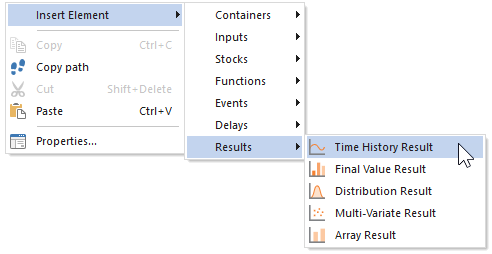
Once you've inserted the element, its Properties dialog will immediately open: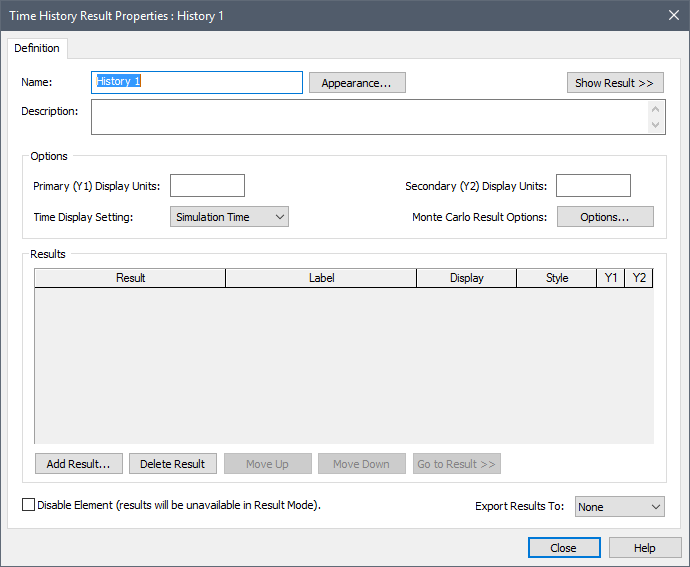
- In the Name field, type "Pond Volume" (unlike other elements The basic building blocks with which a GoldSim model is constructed. Each element represents a feature, pararamer, process or event in the model. in GoldSim, Result element An element that can be used to organize, analyze and display results. names can have spaces).
- In Description, type "Time history of pond volume".
- Press the Add Result... button.
- From the list displayed, select Pond and press OK.
- For that result item,
change the Label to "Volume".
The completed dialog should look like this: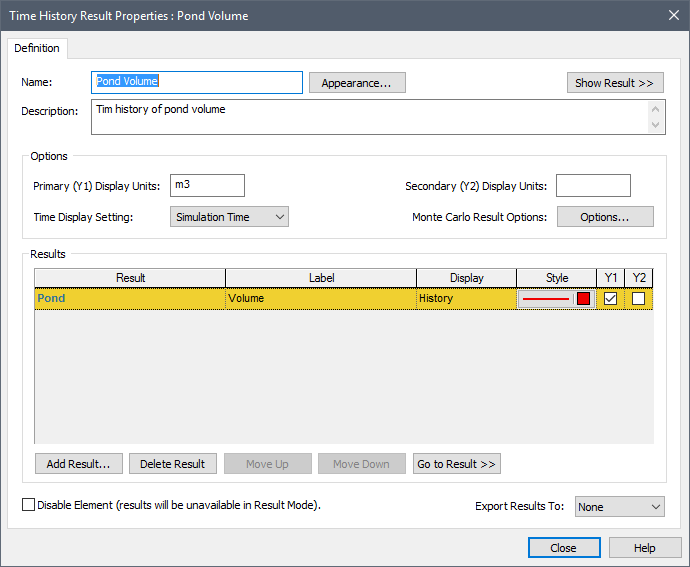
- Press Close to close the dialog.
Let's run the model.
Run the Model:
- Click Run on the toolbar.

- When the model finishes running, a "Simulation Complete!" message is displayed. Press OK to continue. The model is now in Result Mode The state of a GoldSim model when it has been run and contains simulation results..
- Double-click on Pond Volume to view the result:
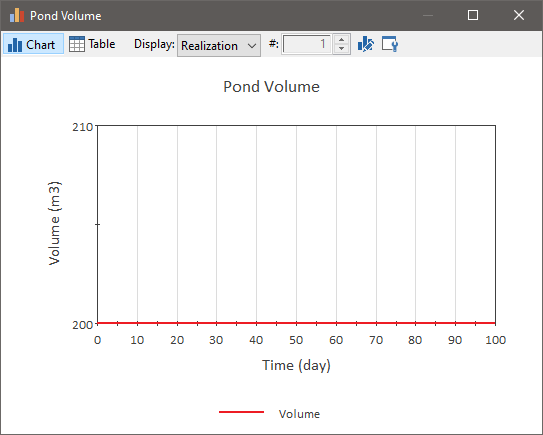
This is obviously not a very interesting result (since the value did not change over time). We will fix that shortly as we add more details. - For now, let's just make
one change here. Right-click anywhere in the chart and a context menu will
appear.From the menu, select View | Show Legend to turn off the
legend in the chart (as we don't need it):
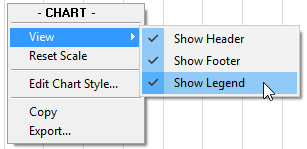
- Close the Result element by pressing on the X.
- Press F4 to return to Edit Mode The state of a GoldSim model when it is being edited and does not contain simulation results..
- Press the Save button in
the toolbar (or press Ctrl+S):
